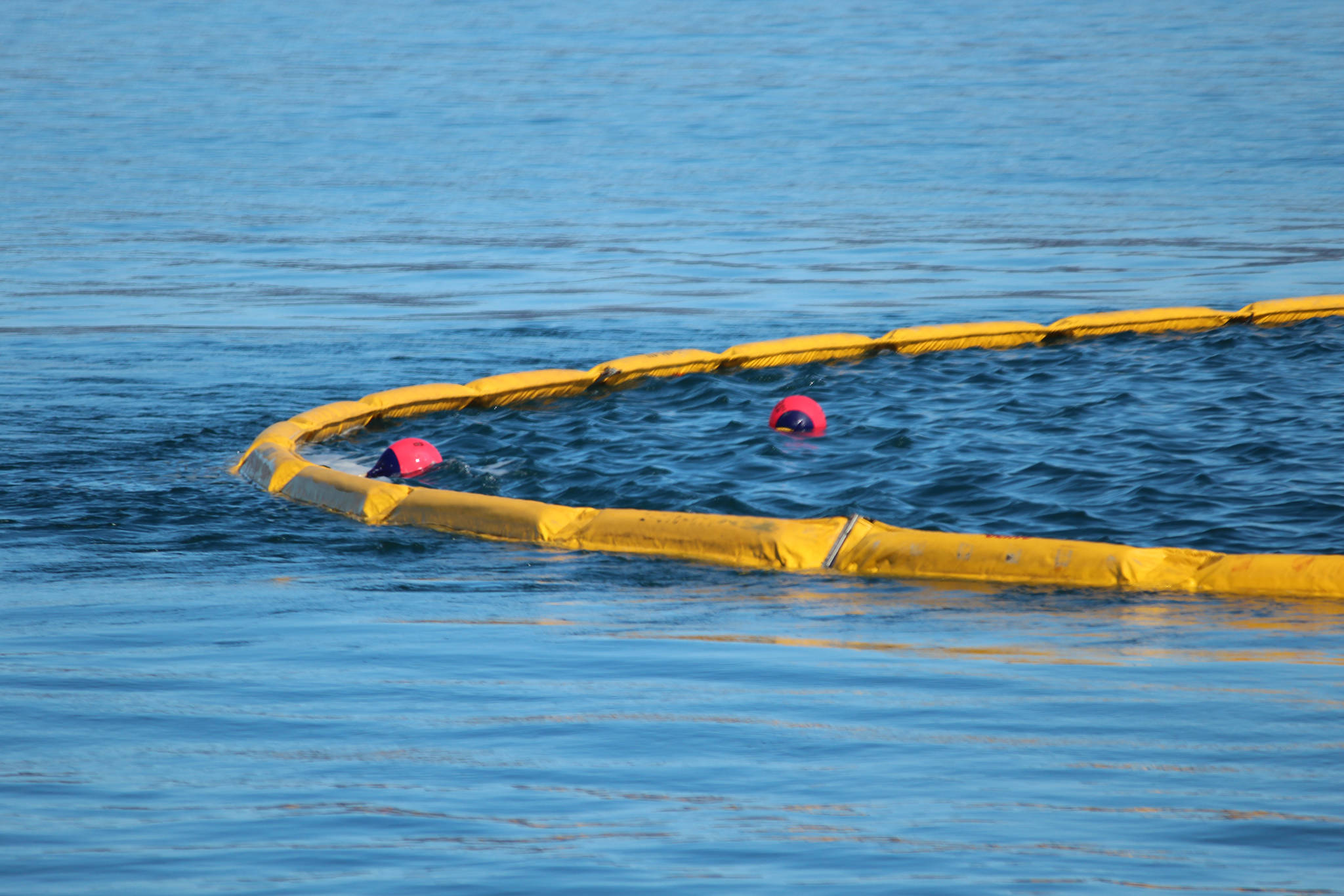If Homer residents have ever wondered just what a bunch of fishing vessels are doing roaming around Kachemak Bay every spring with brightly colored equipment, they’ll get the chance to see it firsthand every six years. The Prince William Sound Regional Citizens’ Advisory Council sponsored Homer’s first public tour of annual oil spill response training in the bay on Saturday.
From two boats — the Discovery and the Rainbow Connection — residents, high school students and local officials got an up close view of exactly what local fishermen have to do each year to prepare to respond to an oil spill in Prince William Sound. Alyeska Pipeline, which was a partner in Saturday’s tour along with the Center for Alaskan Coastal Studies and Alaska Coastal Marine, contracts with about 450 vessels and 1,800-2,000 fishermen to do annual training through the Vessel of Opportunity Program.
The program began in 1991 and provides fishermen with the necessary equipment. They train for 3-4 days altogether, which culminates in heading out on the water to practice their physical response, said Kate Dugan, Alyeska’s community and public relations manager out of Valdez.
RCAC only began letting the public in on this process three years ago, and the organization is making its way through each port where the program is located. Each location — Homer, Kodiak, Cordova, Whittier, Seward and Valdez — will rotate being the site of the public tour each year. This is the first year for Homer.
“Our whole goal is to make sure the tankers going in and out of the Valdez Marine Terminal do so safely, that oil continues to flow and that our waters remain clean,” RCAC Outreach Coordinator Lisa Matlock told the public as the Rainbow Connection started out in the bay Saturday morning. “And this program you see out here today is a very important one where local fishermen are trained each year by Alyeska to do oil spill response, particularly for very sensitive sites and in the nearshore.”
Under a cloudless blue sky, residents young and old whipped out their binoculars to get a better look at the myriad fishing vessels playing out scenarios on the bay. Some towed containment booms, while others followed along as watch boats, and still others pushed the booms along and served as the oil collection vessels.
On board the Rainbow Connection, Matlock moved among the onlookers with diagrams showing the specifications of the oil spill response equipment and small physical examples for people to pass around.
“Homer and Kodiak are on the fringe of the area where boats are called upon to respond, if needed, over in Prince William Sound,” RCAC volunteer and Homer resident Jim Herbert told participants over the loud speaker.
In Homer, the program contracts with 50-60 boats and the fishermen who run them. They’re compensated for the time and effort spent training. While doing the physical response exercise, the boats form task forces, as Herbert called them, to attack different areas of simulated oil spill in the bay.
Boats participating in the program in Homer are classified as tier two vessels, meaning they have 24 hours to assemble and respond in the case of the spill. Other boats in closer proximity to Prince William Sound are tier one, and have only six hours to respond.
“I know in some communities it’s a little bit of a mystery of what happens out here,” Dugan said. “Homer’s pretty lucky. You can see it very close to town. I know in other communities they actually have to go quite a ways away.”
The two tour boats also took onlookers across the bay to Peterson Bay, which the program has pre-identified as an area that’s particularly important to protect and where a certain number of local vessels would be required to respond. The area is home to sea otters, oyster farms and the annual shorebird migration, making it a vulnerable area to oil.
The next time residents will see the oil still response training up close is in 2025 when the program rotates back to Homer. In the meantime, Dugan said Alyeska Pipeline is bringing on updated equipment and vessels as oil spill response technology changes. This will include 10 new tug boats and four new oil spill response barges, she said.
“How that will impact folks here in Homer is that this time next year there will be a different large utility tug that’s supporting this effort,” she said.
Reach Megan Pacer at mpacer@homernews.com.


